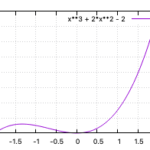ヒストグラムを描くには、data_hist を使う。
ヒストグラムの縦棒の数は bins で指定する。
例
from matplotlib import pyplot as plt
data_hist = [25,26,27,27,20,21,20,28,29,40,25,21,21,41]
plt.hist(data_hist, bins=10, edgecolor='blue')
plt.show()結果

雑記
投稿日:
ヒストグラムを描くには、data_hist を使う。
ヒストグラムの縦棒の数は bins で指定する。
from matplotlib import pyplot as plt
data_hist = [25,26,27,27,20,21,20,28,29,40,25,21,21,41]
plt.hist(data_hist, bins=10, edgecolor='blue')
plt.show()
執筆者:seyanen
関連記事

matplotlib で csv ファイルからデータを読み込んでグラフを表示する方法
np loadtext で csv ファイルを読み込む。 pyplot.bar で棒グラフを表示する。 例 import numpy as np from matplotlib import pypl …

python3 で辞書(dictionary)の一部を del で削除する
辞書の一部を削除するには、del で消去したいキーを指定する。 例 dict1 = {“名前”:”太郎”, “年齢”: 20, “住所”: “東京都千代田区大手町1-1”} print(dict1) …

python3 で、pathlib を使ってファイルの拡張子を取得する方法
pathlib モジュールの stem を使う。 この書き方は、python 3.4 以降で使えるようになった。 https://docs.python.org/3/library/pathlib.h …

2023/01/18
matplotlib のグラフ作成と gnuplot との対応 比較

2022/10/14
pythonで配列(リスト)の、ある要素がわかっているときにその次の要素を取得する方法。